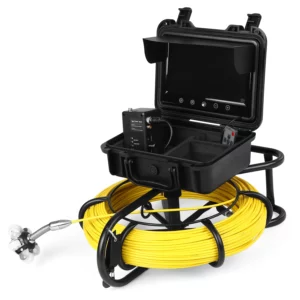Valuing Southeastern Montana Ranchland – From a Production Perspective
Cattle and sheep producers from other regions of the United States often wonder how land in eastern Montana compares in productive value. This discussion will familiarize the reader of what can be expected regarding carrying capacities and forage production on ranches in eastern Montana. Obviously, there are many reasons a buyer may have when looking for Montana land to purchase. When looking at smaller tracts of land, some put emphasis on improvements such as a nice home to live in, some want to be near the forest, and some want to live along a river. For others, remoteness is appealing, and a private place to hunt is popular, too. However, at the end of the day, buyers looking for a working cattle ranch are interested in how many cattle the unit will run and what can be expected for a net return on their investment.
That said, a quick way to evaluate the value of a working ranch would be cost per animal unit. To understand this concept, a prospective buyer or investor needs to understand what an animal unit is? Simply put, it is the capacity to supply all forage needs for a mother cow and her offspring over a twelve month period. Regardless of how many acres it takes to accomplish this, this cost per animal unit (AU) provides a basis for comparison to other regions and other operations and may be used in converting acreage values.
Lenders and appraisers tend to get hung up on value per acre in the process of comparing properties to other sales and sometimes lose sight of adjustments in value in relation to production capacity. Utilizing a cost per animal unit will allow one to quickly determine a net return and narrow down the better investments. The important point in evaluating a ranch by this method is to determine what the true carrying capacity of the ranch really is. One of the most often reported unsatisfactory experiences of buyers interviewed is being mislead by sellers or realtors as to how many cattle the ranch they purchased would run. Buyers are encouraged to research potential purchases for themselves and not be mislead by overzealous realtors, especially those who do not reside in the area, have ranching knowledge or truly “know” the land they are selling.
Now that you have been prefaced on “animal units”, you may be curious to know how many acres it take to support a cow annually in southeastern Montana. To answer that, one must understand the various characteristics and conditions that affect carrying capacities in the region such as the diversity in soils, moisture, vegetation, and topography.
Much of southeastern Montana requires around 20-30 acres to sustain an animal unit. Obviously, there are areas that are rugged buttes, have shallow soils, and/or lack adequate water supplies and may require more than 30 acres to support an animal unit. Conversely, there are also areas predominantly along the rivers that have been seeded into tame pasture/hay mixes and include irrigated hay bases that require 10 acres or less to support an animal unit. An informed buyer may identify these differences with adequate research and interviews among local ranchers.
Now, to apply the information above, we will hypothetically determine our cost per animal unit for a ranch for sale in Powder River County, Montana. The subject ranch (which shall serve as an example) is 12,000 acres in size and consists of 550 acres of irrigated hay, another 500 acres of dryland hay, and the balance of acreage in grazing land watered by a pipeline water system. We determined based on the location, topography, and soils present on this ranch, it will take 20 acres to sustain an animal unit. 12,000 acres divided by 20 acres/animal unit equals carrying capacity of 600 head or animal units (AU). At a selling price of $4,500,000.00, the cost per animal unit equates to $7,500/AU.
To compare with other regions, reports of recent land sales in southern Minnesota ranged from $8,500 to $13,000/acre. It is reported it takes only one acre to sustain one animal unit in Southern Minnesota, thus your comparison. Currently, pasture land in southern Minnesota is purchased and usually converted to row crop farming at this price, but does give one an opportunity to compare values utilizing a constant variable.
To calculate a “net lease return”, the investor needs to know what to expect if he was to lease out the ranch. Summer grazing is leased on a per animal unit month (AUM) basis, or one cow/calf pair grazing for one month. Some investigation into last years’ leases indicate a private lease is around $22 per AUM. Therefore, if you were to allow a grazing of 600 cows for the period of 6 months (May 1st – October 1st) @ $22 per AUM (600x60x$22) you would generate $79,200 gross income. Leasing the hay ground depends much on whether it is irrigated or dry land hay, but can be based on ~$20 – $30/ton. Irrigated hay can generate about 3- 4 ton/acre and dry land produces approximately 1 ton/acre in typical years. On our scenario above, we had 550 acres of irrigated hay producing 3 ton/acre=1,650 tons of hay. We also had 500 acres of dryland hay times 1 ton/acre= 500 ton. This provides for a total of 1,650+500=2,150 ton of hay. At $20/ton, the ranch generated another $43,000.00. You may also lease the hunting out. In prior years, outfitters would pay you ~$10,000 to lease the hunting rights annually but this is variable due to the quality of hunting on the ranch. The home and outbuildings may also be leased and generate a modest $4,500 – $7,000 annually.
Summary of Potential Gross Revenue:
Grazing – $ 79,200.00
Hay – $ 43,000.00
Hunt- $ 10,000.00
Home- $ 7,000.00
TOTAL- $139,000.00
Expenses:
Taxes – $13,500
Insurance- $10,000
Maintenance- $ 6,000
Management – $12,000
TOTAL EXP – $41,500
Net Profit:
Gross Revenue: $139,000
Expenses: $41,500
Net Profit: $97,500.00
Net Lease Return (Net Profit/Purchase Price):
Net Profit – $97,500
Purchase Price – $4,500,000.00
2.17% Net lease return
(That same ranch at a $10,000/AU price or $6,000,000 would provide a net lease return of nearly 1.625%)
Obviously each ranch unit will vary in production and other income streams may be discovered depending on location and other factors, but the exercise above provides the methodology in determining return and may be the decisive factor in negotiating a purchase price.
Potential appreciation of land value should not be the deciding factor in purchasing a ranch, but is a bonus if realized. Compare the above return with a current investment portfolio of mutual funds and determine which risk you would rather take. An investment portfolio only provides a return on your investment if the stocks appreciate. And a stock portfolio can’t provide you with the ability to grow your own food or provide a healthy life style. Compared to gold, which tangible asset has more versatility or offers so much potential? Ranch real estate may be manipulated, managed, or improved, by the owner to produce more income or value. What can one do with paper or gold to increase value? You are correct…….nothing but wait and hope!





